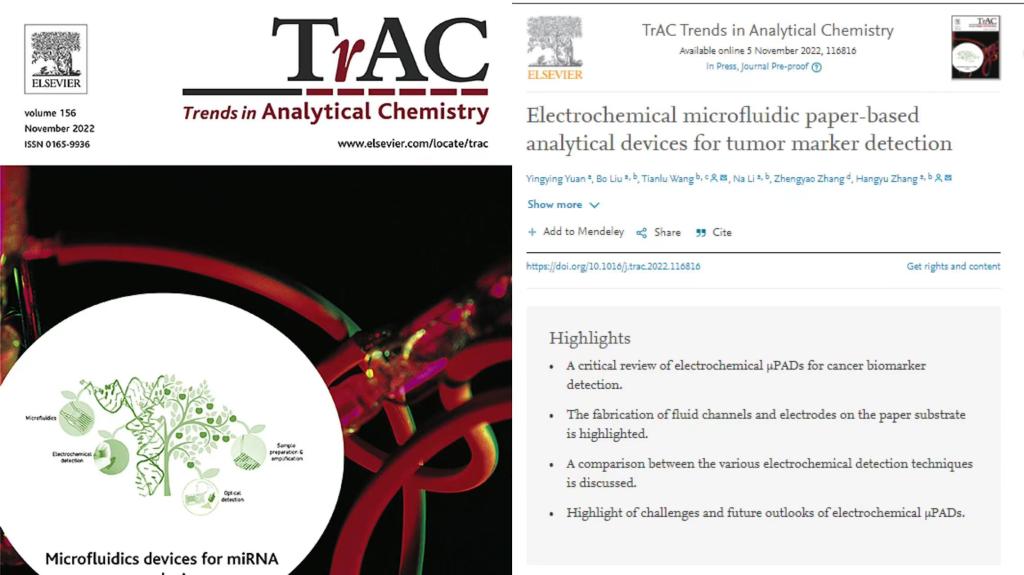Recently, a paper titled "Electrochemical microfluidic paper-based analytical devices for tumor marker detection" co-authored by Associate Professor Zhang Hang and Professor Liu Bo from the School of Biomedical Engineering, Faculty of Medicine at Dalian University of Technology was published in the top-ranked journal in the field of analytical chemistry,Trends in Analytical Chemistry. This journal is the most authoritative review journal in the field of analytical chemistry with an impact factor of 14.9 this year, ranking first in its domain. Yuan Yingying, a graduate student(enrolling in2022)from the School of Biomedical Engineering, is the first author of the article. Associate Professor Zhang Hang from the School of Biomedical Engineering and Chief Physician Wang Tianlu from the affiliated cancer hospitalof the universityare the corresponding authors. The School of Biomedical Engineering at Dalian University of Technology is the primary institutioncreditedfor the paper, with the affiliatedtumorhospital being the collaborating institution.

Cancer has become one of the key factors affecting human health. Early screening for tumor markers is crucial to enhance the effectiveness of cancer treatment and improve the quality of life of patients. Compared with traditional detection methods, electrochemical paper chips that combine electrochemical detection technology with microfluidic paper-based analytical devices (μPADs) have significant advantages such as small size, portability, degradability, rapid analysis, high sensitivity, and low cost. Therefore, these electrochemical paper chips can be an alternative to traditional analytical instruments, especially significant for under-resourced areas that require portable, quick testing equipment. This paper systematicallyelaborates the preparation methods of hydrophobic barriers for 2D μPADs and 3D μPADs and provides detailed introductions to the production methods of paper-based electrodes integrated with μPADs and electrochemical detection.Based on this,the applications of electrochemical μPADs in detecting common tumor markersare introduced. Finally, the current issues and future developments of electrochemical paper chipsare discussed, which has essential theoretical significance and reference value.
The Live-cell Imaging and Sensing Chip team mainly focuses on intelligent medical detection technologies, including FRET fluorescent probes, paper-based microfluidic chips, electrochemical biosensors, and tissue engineering. The team leader is Professor Liu Bo. In recent years, the team has presided over seven National Natural Science Foundation projects, two sub-projects of national major projects, and two sub-projects of key projects. Themembershave published over a hundred papers, applied for over 30 national invention patents (of which two have been commercialized), and signed technical cooperation agreements withmultiplecompanies. The team is currently co-developing tumor marker detection electrochemical paper chip products with enterprises. Furthermore, the FRET probes developed by the team have been promoted and used by over twenty renowned international research institutions.
Link to the paper:(Not provided in the original text)

